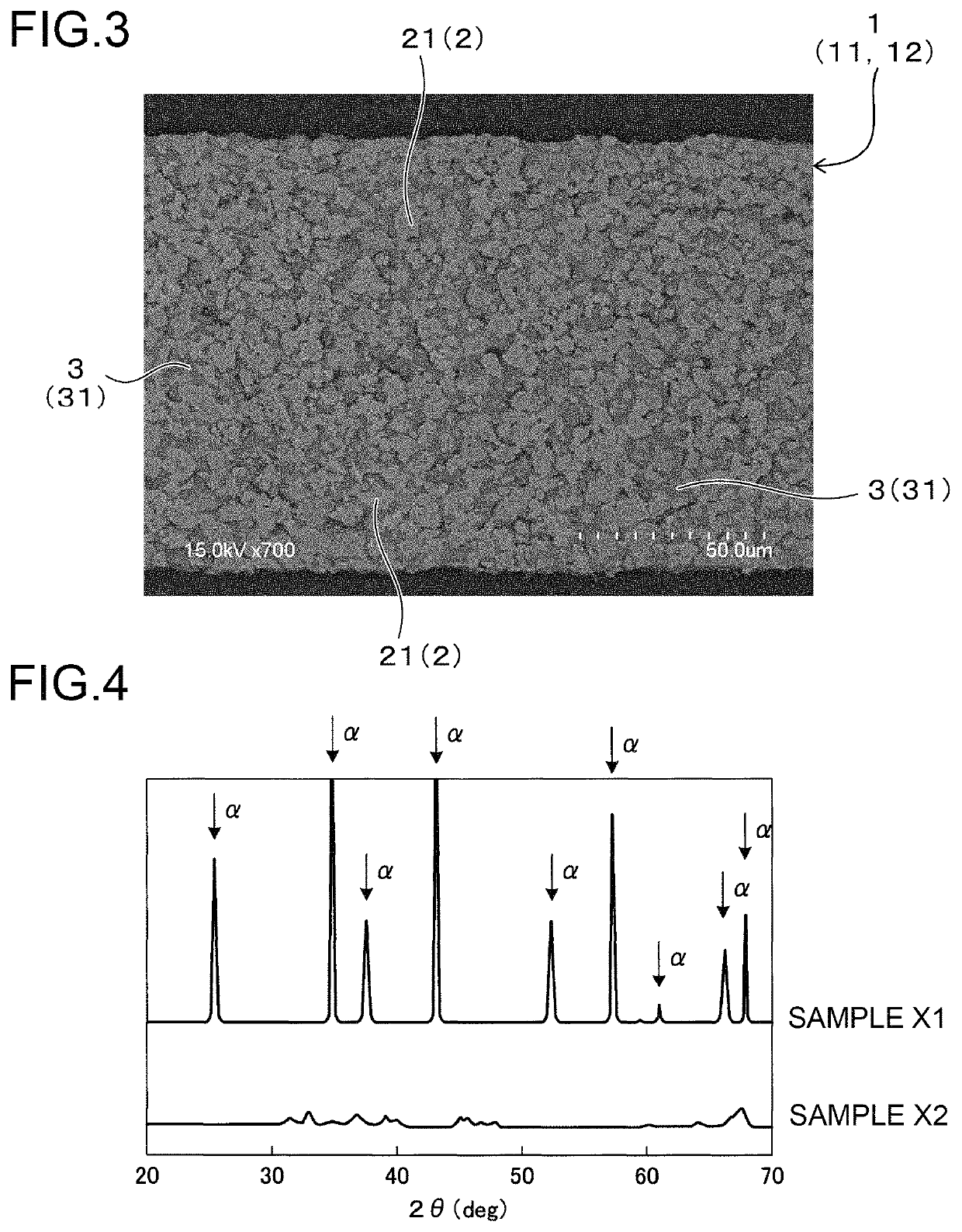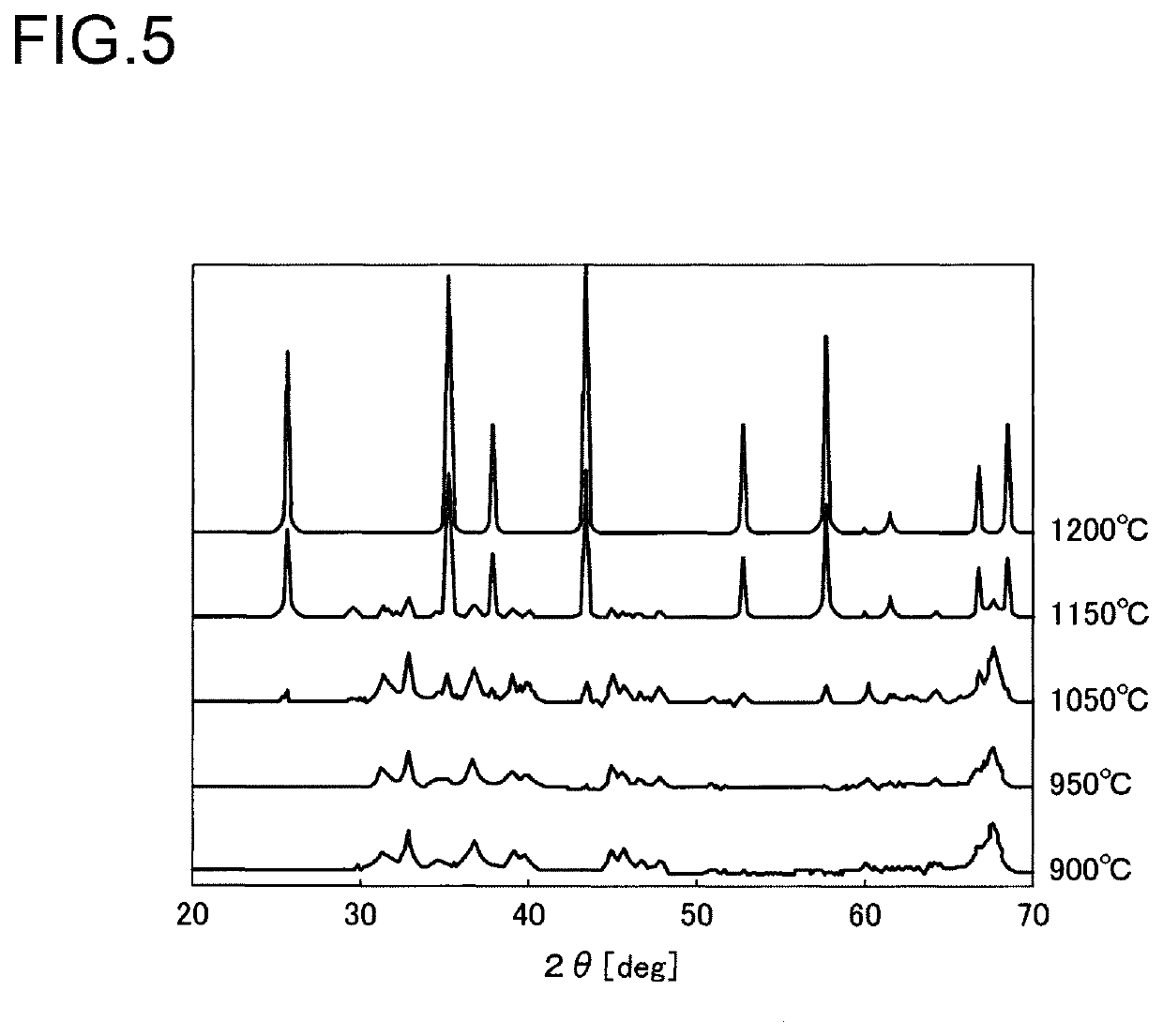Honeycomb structure and method for manufacturing the same
a honeycomb and structure technology, applied in the field of honeycomb structure, can solve the problems of insufficient strength of the honeycomb structure, and achieve the effect of suppressing the reduction of specific surface area, high strength, and sufficient strength
- Summary
- Abstract
- Description
- Claims
- Application Information
AI Technical Summary
Benefits of technology
Problems solved by technology
Method used
Image
Examples
fifth examples
Second to Fifth Examples
[0032]The amounts of materials of honeycomb structure used in the following examples and comparative examples are each expressed in terms of parts by mass relative to 100 parts by mass of promoter particles (i.e. 100 parts by mass of first promoter particles and second promoter particles).
[0033]In a second example, a honeycomb structure was prepared in the same way as in the first example, except that the blending ratio of the inorganic binder material was changed to 5 parts by mass in terms of solid content.
[0034]In a third example, a honeycomb structure was prepared in the same way as in the first example, except that the blending ratio of the inorganic binder material was changed to 15 parts by mass in terms of solid content.
[0035]In a fourth example, a honeycomb structure was prepared in the same way as in the first example, except that the blending ratio of the sintering assistant was changed to 0.7 parts by mass in terms of oxide equivalent amount.
[0036...
tenth examples
Sixth to Tenth Examples
[0055]Hereinafter, a description will be given of an example of a honeycomb structure prepared by using only the first promoter particles made of a ceria-zirconia solid solution as promoter particles, without using the second promoter particles made of alumina. In a sixth example, a honeycomb structure was prepared in the same way as in the first example, except that the addition amount of the first promoter particles was changed to 100 parts by mass without using the second promoter particles and that the sintering temperature was changed to 1000° C. FIG. 3 shows an image of a cross section of the honeycomb structure of the sixth example acquired using the SEM.
[0056]As shown in FIG. 3, the honeycomb structure 1 of the sixth example included the first promoter particles 21 as the promoter particles 2, but did not include the second promoter particles 22. The first promoter particles 21 were made of a ceria-zirconia solid solution. The second promoter particles...
example
[0073]The present example is an example to examine a change of a crystal structure when an inorganic binder material made of alumina sol is sintered at different sintering temperature conditions.
[0074]A liquid mixture was prepared by mixing an inorganic binder material made of alumina sol (AS520 manufactured by Nissan Chemical Industries, Limited) with a sintering assistant solution made of an aqueous solution of an iron sulfate (II). Then, the inorganic binder materials and the sintering assistant solution were mixed so that an amount of Fe relative to 10 parts by mass in terms of solid content of alumina sol was 0.35 parts by mass in terms of oxide equivalent amount. This blending ratio was similar to the first example. Then, water in the liquid mixture was evaporated, thereby obtaining a solid. The obtained solid was sintered in an electric furnace. The sintering was performed by increasing the temperature in the electric furnace at a rate of 200° C. / h, and maintaining the temper...
PUM
| Property | Measurement | Unit |
|---|---|---|
| temperature | aaaaa | aaaaa |
| diameter×L | aaaaa | aaaaa |
| thickness | aaaaa | aaaaa |
Abstract
Description
Claims
Application Information
 Login to View More
Login to View More - R&D
- Intellectual Property
- Life Sciences
- Materials
- Tech Scout
- Unparalleled Data Quality
- Higher Quality Content
- 60% Fewer Hallucinations
Browse by: Latest US Patents, China's latest patents, Technical Efficacy Thesaurus, Application Domain, Technology Topic, Popular Technical Reports.
© 2025 PatSnap. All rights reserved.Legal|Privacy policy|Modern Slavery Act Transparency Statement|Sitemap|About US| Contact US: help@patsnap.com



